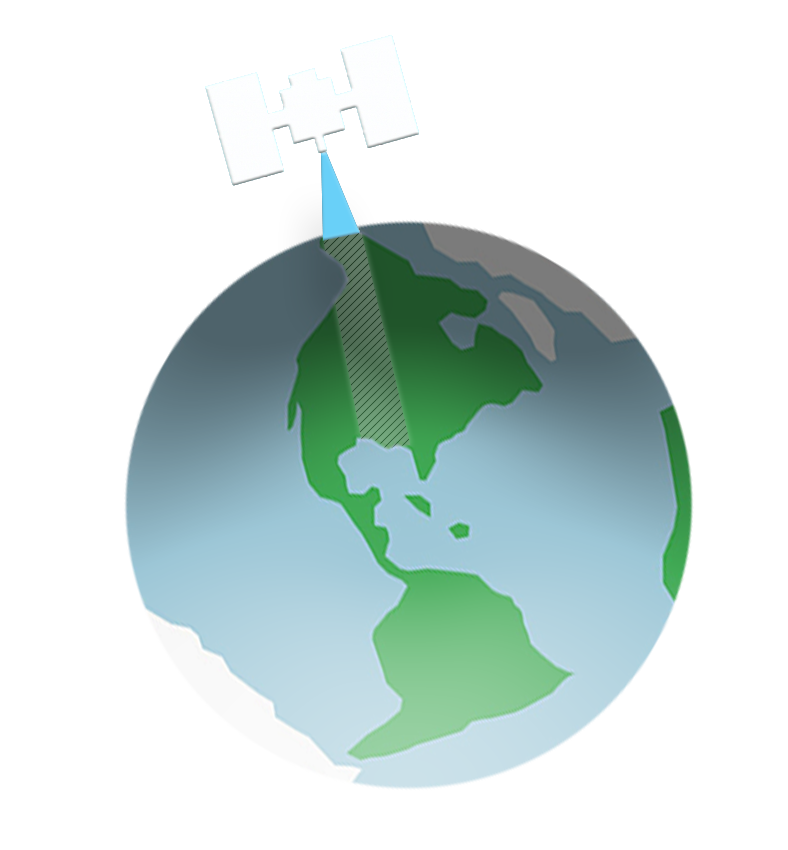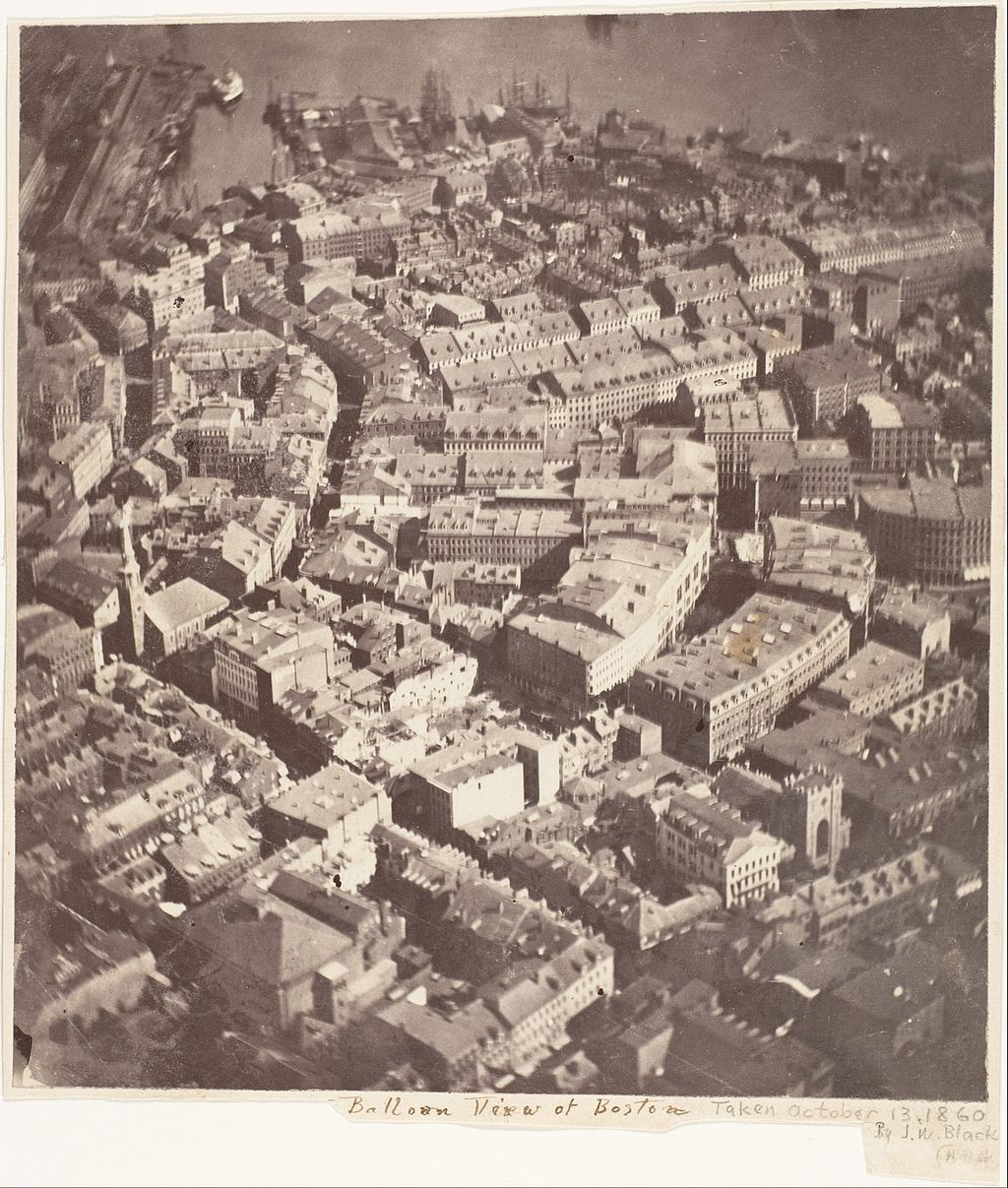Culture, Climate Science & Education

SECTION THREE
Spectral Signatures
Click the Bubbles Above or the Double Arrows () to Explore this Section
A. Spectral Reflectance
Click this image to expand it.

Reflectance spectra of photosynthetic (green) vegetation, non-photosynthetic (dry) vegetation, and a soil. The green vegetation has absorptions short of 1 µm due to chlorophyll. Those at wavelengths greater than 0.9 µm are dominated by liquid water. The dry vegetation shows absorptions dominated by cellulose, but also lignin and nitrogen. Source: Clark, R. N. 1999. Chapter 1: Spectroscopy of Rocks and Minerals, and Principles of Spectroscopy. In: Rencz AN editor. Manual of Remote Sensing, Volume 3, Remote Sensing for the Earth Sciences. John Wiley and Sons, New York, p 3- 58.
Section Two reviewed how surfaces reflect, absorb, emit, and transmit different light wavelengths. This interaction of light wavelengths and a surface reveals information about the physical and chemical makeup of the object.
Remote sensing instruments detect electromagnetic (EM) energy reflected (and sometimes emitted) from the earth’s surface. A spectral response curve graphs an object’s spectral signature—the intensity of energy reflected—across different wavelengths. A few applications include mapping landcover types, analyzing vegetation health, or identifying coral reefs (e.g. Lubin et al 2001).
Click images to expand

Credit: Silván-Cárdenas J, Corona N, Mauricio Galeana Pizaña J, Núñez JM, Madrigal J. 2015. Geospatial Technologies to Support Coniferous Forests Research and Conservation efforts in Mexico. In: Weber RP editor. Old-Growth Forests and Coniferous Forests: Ecology, Habitat and Conservation. Nova Science Publishers (UK).

Credit: NASA, Jeannie Allen. 2010. In: Butcher G, Mottar J, Parkinson CL, Wollack EJ. 2016. Tour of the Electromagnetic Spectrum. 3rd ed. Washington DC, NASA. https://science.nasa.gov/ems/
Look at the spectral curves of conifer and deciduous trees (aka needleleaf and broadleaf) at left. At a glance, we can see why leaves appear green—chlorophyll absorbs blue and red light while reflecting more heavily in green wavelengths. What wavelengths would best distinguish conifer vs. deciduous trees? That is, where are the curves most different?
The graphic at bottom left shows spectral signatures for several earth surfaces. Near infrared wavelengths >800 nm would best distinguish conifer from deciduous trees—the conifer and deciduous trees have similar light reflectance in human-visible wavelengths and are difficult to tell apart just by color.
Could you distinguish between clouds and ice surfaces in these visible wavelengths? Probably not—both surfaces reflect highly across all visible wavelengths, thus appearing bright white. However, clouds stand apart from ice in Short Wave Infrared (SWIR; not pictured) wavelengths >1,000 nm.
In a nutshell, different features in an image can be distinguished if they have differing reflectance in a region of the electromagnetic spectrum and you have a sensor for that region. Even if two surface types have similar reflectance (e.g. alpine meadow vs low-elevation meadow) it is sometimes possible to classify the features apart with “auxiliary” datasets like elevation. A time series of images could separately map plant species that leaf-out or flower at different times.
Click the Bubbles Above or the Double Arrows () to Explore this Principle
B. Spectral Bands
Click image to expand

From: NASA GSFC. L.Rocchio & J.Barsi. [Internet] 2018 Dec 14th, cited 2018 Dec 16. Available from https://landsat.gsfc.nasa.gov/
A band (also called a channel) is a range or region within the electromagnetic spectrum (EMS). Categorizing and measuring the EMS with bands helps us to summarize and analyze spectral reflectance—however, a “correct” universal approach does not exist. In fact, each satellite or aerial sensor breaks down the EMS differently, according to the earth features it was designed to monitor. Band “regions” are numbered differently between sensors. The graphic at left shows 5 earth observing satellites and the bands of the electromagnetic spectrum each sensor measures. What is the widest band on the graphic? What benefit would a narrow band give?
Click image to expand

Source of graphic: Kumar, Nagesh. Remote Sensing: Advanced Topics. Module 9, Lecture Notes 4. 2015 Nov 28, Accessed 2018 Dec 17. https://pdfs.semanticscholar.org/ecdc/433403fa0b3698f143ca9148e5aaaa8ca693.pdf
The previous page displays smooth spectral reflectance curves—creating smooth curves requires knowing how reflectance changes over very small wavelength intervals. These are created with spectrometers or Hyperspectral Sensors, which measure hundreds of narrow intervals or bands in the electromagnetic spectrum. Most earth observing sensors however are Multispectral Sensors (MSS) and measure fewer (~3 to 15), wider bands. NASA’s MODIS sensor uses 36 spectral bands but is considered a multispectral scanner.
Click image to expand

A Multispectral Scanner (e.g. Landsat satellites) measures light reflectance, averaged in several “bands” or spectral ranges. A MSS would not be able to detect the smooth reflectance curve in this graphic—a MSS could summarize this reflectance pattern with a bar graph. The height of a bar shows the strength of reflectance within each band. From: Tandarich J, Sluis W, Biehl L, Johannsen C, Carter P. 2001. The Use Of Hyperspectral Remote Sensing Imagery For The Study Of Prairie Ecosystems. Available from: https://engineering.purdue.edu/~biehl/Wetlands/report.html
A band generalizes spectral reflectance—the light intensity for all wavelengths within a band’s range is averaged. For example “Band 2” of Landsat 8 averages reflectance in wavelengths between 0.452 – 0.512 μm—this is the blue band. Band 8 creates a black & white image, averaging light reflectance intensity across 0.503 – 0.676 μm—what colors are lumped together in this band?
What we call Multispectral Sensors (MSS) cannot measure the light reflectance for very specific wavelengths (i.e. narrow bands). Instead of a smooth spectral curve, MSS display a feature’s spectral signature with a bar chart—the height of a bar shows the strength of reflectance, averaged within each band’s range.
Click the Bubbles Above or the Double Arrows () to Explore this Principle
C. Wavelengths Used in Remote Sensing
Next this course will highlight the applications of electromagnetic energy for Earth observation science. Each part of the electromagnetic spectrum tells a different story of your image. For example, blue light penetrates water and can be useful for mapping invasive aquatic weeds. Near Infrared wavelengths are useful in assessing vegetation health and vigor. You can take a tour of the Electromagnetic Spectrum by clicking the button below, which will take you to NASA's set of visually striking lessons on the spectrum. Each is short, summarizing what you should know.
Click the Bubbles Above or the Double Arrows () to Explore this Principle
D. Benefits to People
Before you learn more of the science behind remote sensing, take some time to explore how this imagery is used to benefit society.
The NASA link below provides stories of how Landsat satellite imagery is being used. Explore the “Carbon & Climate” section and one other section of your choice.
Click the Bubbles Above or the Double Arrows () to Explore this Principle
E. References
Butcher G, Mottar J, Parkinson CL, Wollack EJ. 2016. Tour of the Electromagnetic Spectrum. 3rd ed. Washington DC, NASA. 32p. Available from: https://science.nasa.gov/ems/
Lubin D, Li W, Dustan P, Mazel CH, Stamnes K. 2001. Spectral Signatures of Coral Reefs: Features from Space. Remote Sensing of Environment. V.75(1) p 127-137.


